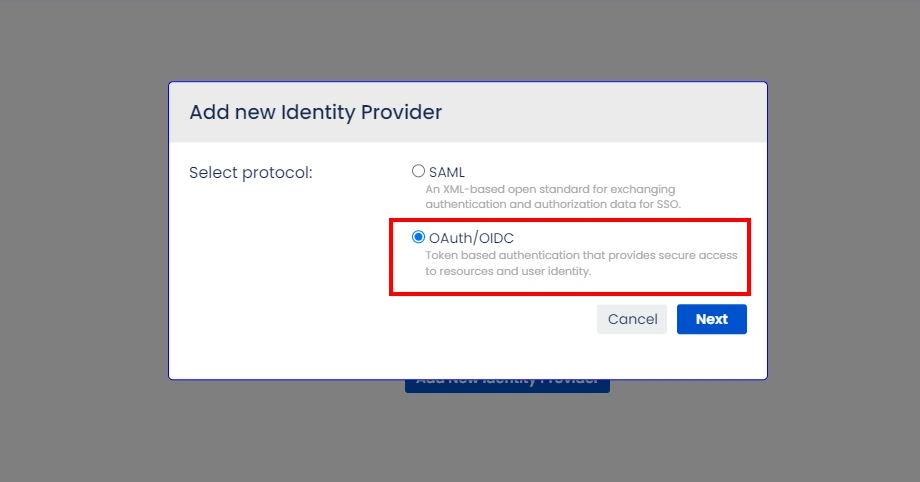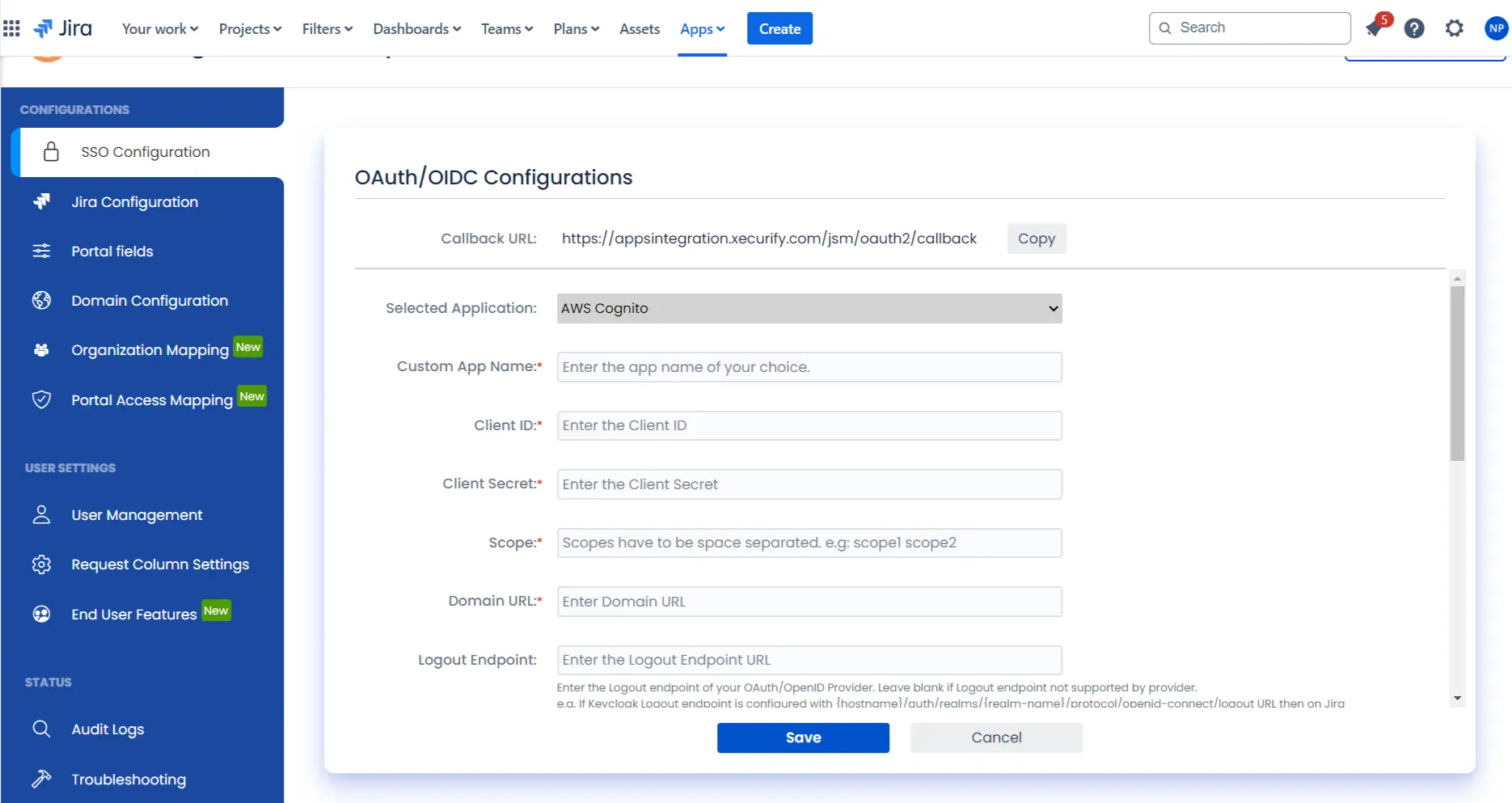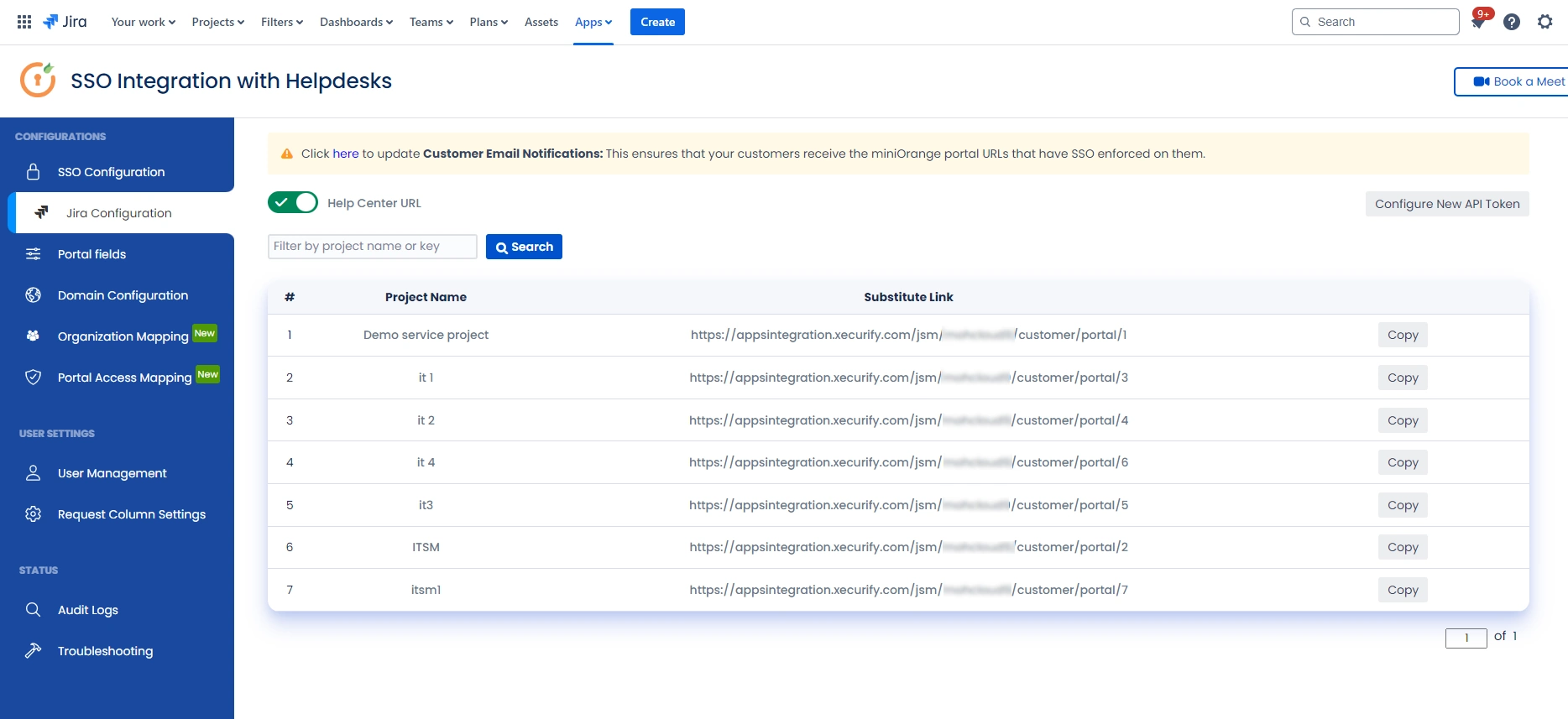Contents
SSO for JSM Customers using AWS Cognito as OAuth Provider
Our SAML/OAuth SSO for JSM Customers app offers the functionality to seamlessly integrate OAuth/OpenID Single Sign-On into the JSM customer portal, ensuring compatibility with all OAuth/OpenID Providers. This guide will outline the steps for configuring SSO between the JSM customer portal and your OAuth/OpenID Provider. By following these instructions, customers will undergo authentication via your OAuth/OpenID Provider prior to accessing the JSM customer portal. This integration facilitates a smooth customer experience while also mitigating spam ticket.
Download And Installation
- Log into your Jira instance as an admin.
- Navigate to the settings and Click on Apps.
- Locate SAML/OAuth SSO for JSM Customers.
- Click on free trial to begin a new trial SAML/OAuth SSO for JSM Customers.
- On menu bar click on Apps. Locate SAML/OAuth SSO for JSM Customers .
Step 1: Setup AWS Cognito as OAuth Provider
- Sign in to AWS Amazon.
- Search for Cognito in the AWS Services search bar as shown below.
- Click on Create a user pool to create a new user pool.
- Choose the attributes in your user pool to be used during the sign-in process
- Set up a strong password to configure your security requirements. Go ahead with the ‘No MFA’ option if you want users to only sign in with a single authentication factor. If you wish to enable MFA (Multi-factor authentication) it will require SMS messages which are charged separately by Amazon SNS. Learn more about that here. Click Next.
- Configure attributes that would be required during the user sign-up flow.
- Choose additional attributes if you wish to. Click Next.
- Configure how your user pool sends email messages to users.
- Enter a name for your user pool, Also Under Hosted authentication pages, check ‘Use the Cognito Hosted UI’.
- Now, Under the Domain section choose the domain type as ‘Use a Cognito domain’. Enter a domain name for your Cognito app.
- Under the Initial app client section, Enter a name for your app client and check on Generate a client secret.
- Now enter your Callback/Redirect URL which you will get from your miniOrange plugin present on your Client side and paste it under the Allowed callback URLs text-field. Also refer the following image for choosing the authentication flows for your app.
- To redirect a user to a specific site after they sign out from the customer portal, enter the site's URL in the "Allowed Sign-Out URLs" field. (Optional)
- Now, Under Advanced app client settings, select Identity provider as Cognito user pool & Select Authorization code grant under the OAuth 2.0 grant types and also select openid,email and profile checkboxes under the OpenID Connect scopes section (Please refer to the image below).
- Click on the Next button to save your configurations.
- Now, Review your selection of requirements. Click Create user pool to confirm the selection and create a user pool.
- After successfully creating your user pool, Select your pool name from the list of pools to start with user creation.
- Go to the Users tab, and click Create user.
- Enter details such as username, email address & password. Click on Create user to save the details.
- After the successful creation of the user, you will need a copy of the Cognito domain, Client ID, and Client Secret.
- Go to the App Integration section and copy the complete domain name {your domain name}.auth.{region name}.amazoncognito.com. This should be entered into the domain URL field in SSO Configuration tab of the Jira plugin.
- To get the Client ID and Client Secret, stay on the same 'App Integration' tab and scroll down to the App clients and analytics section. Click on your App client name to see the Client ID and Client Secret.
- We will need client id and client secret in the next step.
- You have Successfully complete AWS Cognito side configuration.























Step 2: Setup JSM as OAuth Client
- Go to the Manage Apps -> click Getting started under SSO Integration with Helpdesk then click on the Add New Identity Provider.
- Select OAuth/OIDC and click on the next button.
- Select AWS Cognito from the Selected Application dropdown menu.
- Enter Client Id, client secret & AWS Cognito Domain name as {your domain name}.auth.{region name}.amazoncognito.com
- Add https://{domainName}/logout?client_id={ClientID}&logout_uri={Sign out URL} in logout endpoint. This endpoint will logout you from Cognito when you logout from JSM customer portal.
- Configure the scope as openid profile email.
- You can also add additional scopes space separated as per the requirement.
- Click on Save button and then test connection for verifying the entered details.



Step 3: User Attribute Mapping
- Once you see all the values in Test connection, go to User Attribute Mapping. Map attributes like Email, firstname, lastname, etc. Click on Save.

Step 4: Integrate Atlassian HelpDesk with JSM SSO
- Navigate to the Jira Configuration tab. Click on the Configure API Token and configure the Service Account API token with the email.
- After successful configuration of API token all the service desk projects with respective links will be displayed. These substituted links will be used by customers for accessing particular projects with SSO.
- Copy any of the substitute links you see for your portals and try accessing it in a private browser window. You would be automatically redirected to your Identity Provider for authentication and would be allowed access to the portal only after successful authentication.


Recommended Add-Ons

Two Factor Authentication
Enable 2FA/MFA for users & groups and let users configure 2FA during their first login.
Know More
User Sync SCIM Provisioning
Synchronize users, groups & directory with SCIM & REST APIs for Server/DC.
Know More
API Token Authentication
Secure your JIRA Data Center/Server REST API using API Tokens.
Know MoreAdditional Resources
Bitbucket Git Authentication App | Kerberos/NTLM Apps | Word/PDF Exporter | WebAuthn | SonarQube SSO | Jenkins SSO
If you don't find what you are looking for, please contact us at support-atlassian@miniorange.atlassian.net or raise a support ticket here.

